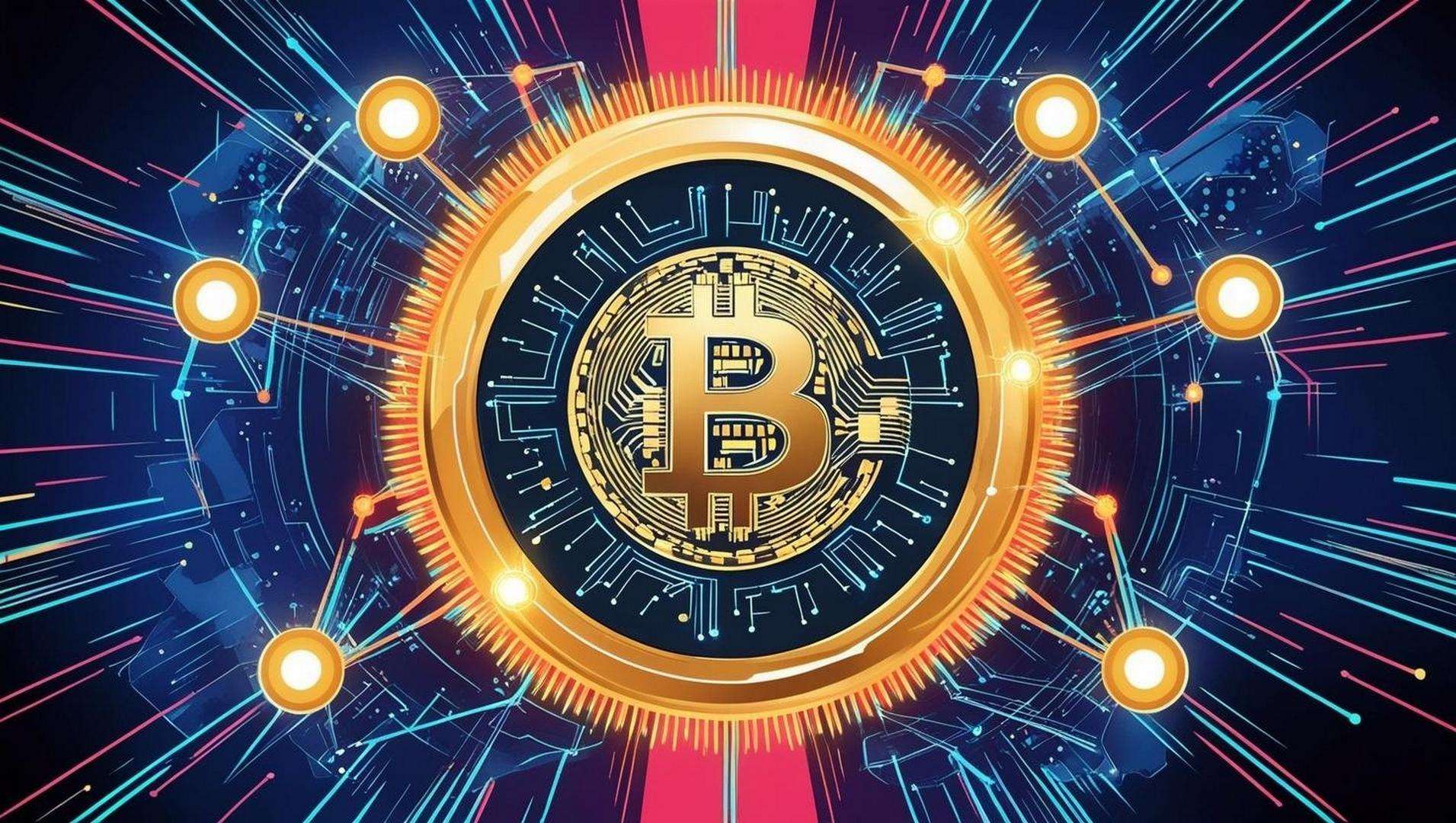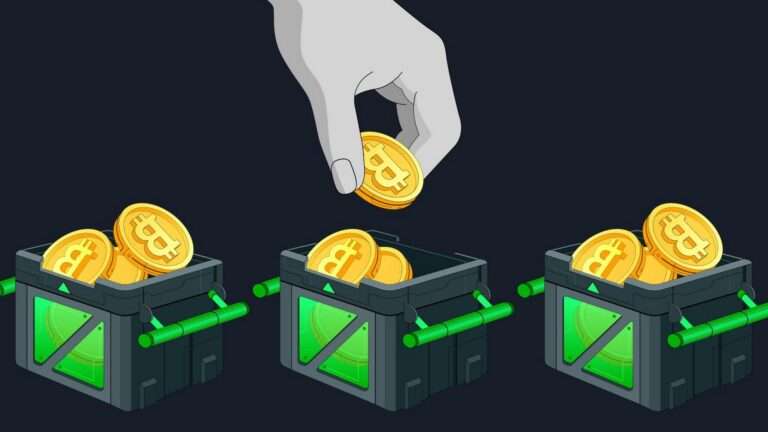Crypto Glossary for Beginners (A to Z: Terms & Jargon)

This glossary covers essential terminology in the cryptocurrency, blockchain, Web3, and NFT ecosystems, arranged alphabetically for convenient reference.
A
- 51% Attack: When one entity controls over 50% of a blockchain’s mining power, potentially altering the blockchain or blocking transactions.
- ABI (Application Binary Interface): A standard for interacting with smart contracts, defining how to call functions and access data.
- Abstract: Refers to conceptual ideas or designs implemented in blockchain code.
- Account: A unique identifier on a blockchain holding cryptocurrency for transactions.
- Accounting Token: Tokens used for accounting within a blockchain, representing debts or credits.
- Accumulation/Distribution Indicator: A tool measuring money flow into or out of a cryptocurrency.
- ACTOR: A participant or node in a blockchain network.
- Adaptive State Sharding: A technique to improve blockchain scalability by dividing the network into smaller parts.
- Address: A unique identifier that functions like a bank account number in cryptocurrency networks, allowing users to send and receive digital assets.
- Adoption Curve: The rate at which new technologies like blockchain are adopted by the public.
- Aeternity Blockchain: A platform using a hybrid consensus of Proof of Work and Proof of Stake.
- Air-gapping: Isolating a device from the internet for security, often used in crypto storage.
- Airdrop: Distributing free cryptocurrency tokens to wallets, often for marketing.
- Airnode: A decentralized oracle providing data to smart contracts.
- Algo-Trading (Algorithmic Trading): Using algorithms to execute crypto trades automatically.
- Algorithm: Rules or steps for solving problems, like mining cryptocurrency.
- Algorithmic Market Operations (AMOs): Automated systems managing algorithmic stablecoin supply.
- Algorithmic Stablecoin: A stablecoin maintaining value through algorithms, not collateral.
- All-Time-High (ATH): The highest price a cryptocurrency has reached.
- All-Time-Low (ATL): The lowest price a cryptocurrency has reached.
- Allocation: Distributing cryptocurrency tokens to teams, investors, or institutions.
- Altcoin: Any cryptocurrency other than Bitcoin, like Ethereum or Litecoin.
- Amazon S3: Cloud storage service by Amazon, used in blockchain for data.
- Angel Investor: An individual funding startups, often in exchange for equity, including crypto projects.
- Anti-dump/Anti-Dumping Policy: Rules preventing rapid selling of crypto tokens to avoid price crashes.
- Anti-Money Laundering (AML): Regulations to prevent crypto use in money laundering.
- Apeing: Slang for investing in crypto without research, hoping for quick profits.
- Arbitrage: Profiting from price differences of the same asset across markets.
- Arbitrum: A layer 2 solution for Ethereum, reducing fees and congestion.
- Archival Nodes: Nodes storing the full blockchain history for data retrieval.
- Aroon Indicator: A tool to assess trend strength in cryptocurrency prices.
- ASIC (Application-Specific Integrated Circuit): Hardware designed for mining specific cryptocurrencies, like Bitcoin.
- Astroturfing: Fake grassroots support for crypto projects, often by paid individuals.
- Attestation Ledger: A record providing proof of transactions or states on a blockchain.
- Authentication: Verifying user or device identity on a blockchain network.
- Average Directional Index (ADX): A technical indicator measuring trend strength in crypto markets.
B
- Bag: Slang for holding a large amount of a specific cryptocurrency.
- Bakers: In Tezos, participants creating new blocks, similar to miners.
- Banking as a Service (BaaS): Banks providing services via APIs, used in fintech and blockchain.
- Basket: A collection of different cryptocurrencies held as one investment.
- Base Fee: Ethereum’s minimum transaction fee, introduced with EIP-1559.
- Beacon Chain: Part of Ethereum 2.0, managing consensus and network coordination.
- Bear: Someone believing crypto prices will fall.
- Bear Market: A market where prices drop significantly, with low investor confidence.
- Bear Trap: A false signal of rising prices, tricking bears into buying before a fall.
- Bearwhale: A large investor selling crypto to lower prices for profit.
- Benchmark: A standard to measure crypto or portfolio performance against similar assets.
- Benchmark Index: A standard index for comparing crypto fund performance.
- BEP-2: Token standard for Binance Chain.
- BEP-20: Token standard for Binance Smart Chain, like ERC-20 on Ethereum.
- BEP-721: NFT standard for Binance Smart Chain, like ERC-721 on Ethereum.
- BEP-95: A hard fork upgrade on Binance Smart Chain to burn BNB tokens.
- Big Tech: Large tech companies like Google, involved in blockchain and crypto.
- Binance Labs: Binance’s venture arm, investing in blockchain projects.
- Binance Launchpad: A platform for launching new crypto tokens via IEOs.
- Bitcoin (BTC): The first cryptocurrency, created by Satoshi Nakamoto in 2009.
- Bitcoin ATM (BTM): Machines for buying or selling Bitcoin with cash or cards.
- Block Gas Estimator Feed: A tool estimating gas prices for Ethereum transactions.
- Blockchain: A decentralized ledger recording transactions across computers, ensuring security.
- Bridge: A protocol transferring assets between different blockchains.
- Bulletproofs: Zero-knowledge proofs used in privacy-focused blockchains, short and trustless.
C
- Cancel Transactions: Replacing a transaction with a higher gas price to get it mined first.
- Censorship: Excluding certain transactions from blocks, often maliciously.
- Cold Wallet: A cryptocurrency wallet that is not connected to the internet, providing enhanced security against hacking.
- Confirmed Transaction: A transaction included in a block, part of the permanent blockchain.
- Consensus Mechanism: The protocol used by blockchain networks to achieve agreement on the state of the ledger among distributed participants.
- Cross-Chain Arbitrage: Profiting from price differences of the same asset across blockchains.
- Cryptocurrency: Digital or virtual currency that uses cryptography for security and operates on blockchain technology.
D
- DAO (Decentralized Autonomous Organization): An organization represented by rules encoded as a computer program that is transparent, controlled by organization members, and not influenced by a central authority.
- Dapp (Decentralized Application): An application running on a blockchain, using smart contracts, decentralized.
- DeFi (Decentralized Finance): Financial apps on blockchain, operating without central authorities.
- DEX (Decentralized Exchange): A crypto exchange on blockchain, enabling peer-to-peer trading.
- Dropped Transaction: A transaction not included in a block, removed from the mempool.
E
- EIP-1559: Ethereum proposal changing gas fee calculation, introducing base and tip fees.
- EOA Transaction: A transaction by a user account on Ethereum, not a smart contract.
- ERC-20: A technical standard used for smart contracts on the Ethereum blockchain for implementing tokens.
- ERC-721: The token standard used to create non-fungible tokens (NFTs) on the Ethereum blockchain.
- Ethereum: A blockchain for smart contracts and decentralized apps, launched in 2015.
- Ethereum 2.0: Ethereum’s upgrade to Proof of Stake from Proof of Work.
- Ethereum Virtual Machine (EVM): The runtime for executing smart contracts on Ethereum.
F
- Failed Transaction: A transaction that didn’t execute, often due to insufficient gas.
- Fiat Currency: Government-issued currency that is not backed by a physical commodity like gold but rather by the government that issued it.
- Flash Loan: Uncollateralized loans that are borrowed and repaid within a single blockchain transaction.
- Floor Price: The lowest price at which an NFT from a specific collection is available for purchase.
- Fork: A split in a blockchain network, creating two separate versions of the blockchain with a shared history.
- Front-running: Placing a trade before a large order to profit from its price impact.
- Fungible Token: A token where each unit is identical in value and can be exchanged with any other unit of the same token (e.g., Bitcoin, Ethereum).
- Full Nodes: Nodes validating all blockchain transactions and blocks, ensuring network integrity.
G
- Gas: A unit measuring computational effort for Ethereum transactions.
- Gas Estimator: A tool helping estimate gas prices for faster transaction processing.
- Gas Fees: Fees paid to miners for processing Ethereum transactions.
- Gas Limit: Maximum gas allowed for an Ethereum transaction.
- Gas Price: Amount of Ether (in Gwei) paid per gas unit for a transaction.
- Genesis Block: The first block of a blockchain, often hardcoded into the blockchain’s software.
- Governance Token: A token that gives holders voting rights over the future of a protocol or platform.
- Goerli: An Ethereum testnet for developers to test apps without real Ether.
- Gwei: A small Ether unit, 1 Gwei = 0.000000001 ETH, used for gas prices.
H
- Hash: A function that converts an input of any length into a fixed-size string of bytes, used extensively in blockchain technology for security.
- Hard Cap: The maximum amount of funds a cryptocurrency project aims to raise during its token sale.
- Hard Fork: A radical change to a blockchain protocol that makes previously invalid blocks/transactions valid (or vice-versa), requiring all users to upgrade to the latest version.
- Hot Wallet: A cryptocurrency wallet that is connected to the internet, allowing for quick transactions but with higher security risks compared to cold wallets.
I
- ICO (Initial Coin Offering): A fundraising method where new projects sell their underlying crypto tokens in exchange for established cryptocurrencies like Bitcoin or Ethereum.
- Immutable: Unchangeable; once data is recorded on a blockchain, it typically cannot be altered.
- Internal Transaction: A transaction between smart contracts on Ethereum, not user-initiated.
- Interoperability: The ability of different blockchain systems to communicate, share, and work with each other.
J
- JIT Arbitrage: “Just in Time” arbitrage, exploiting price discrepancies instantly.
K
- Kovan: An Ethereum testnet for testing before mainnet deployment.
- KYC (Know Your Customer): The process of verifying the identity of customers, often required by cryptocurrency exchanges to comply with regulations.
L
- Layer 1: The main blockchain layer, like Ethereum or Bitcoin.
- Layer 2: Scaling solutions on top of layer 1, improving speed and cost.
- Light Nodes: Nodes relying on full nodes for data, not storing the full blockchain.
- Liquidations: In DeFi, selling off positions when collateral falls below required levels.
- Liquidity: How easily an asset can be traded without affecting its price.
- Liquidity Pool: A collection of funds locked in a smart contract that facilitates trading, lending, and other functions in DeFi applications.
- Loopring: A layer 2 protocol for Ethereum, enabling fast, low-cost trades with zk-rollups.
M
- Market Cap: The total value of a cryptocurrency, calculated by multiplying the current price by the circulating supply.
- Max Fee Per Gas: Maximum amount a user will pay per gas unit on Ethereum.
- Max Priority Fee: Additional fee to incentivize miners to include a transaction sooner.
- Mempool: A waiting area for unconfirmed transactions before they are added to a block.
- Metadata: Additional information that describes NFTs or other blockchain assets, including properties, images, descriptions, and other attributes.
- Metaverse: A collective virtual shared space, created by the convergence of virtually enhanced physical reality and physically persistent virtual space.
- Mining: The process of validating transactions and creating new blocks in proof-of-work blockchains, requiring significant computational resources.
- Mint: The process of creating a new token or NFT and recording it on the blockchain.
- Moon: A colloquial term referring to a cryptocurrency significantly increasing in price in a short period.
- Multi-signature (Multisig): A security feature requiring multiple private keys to authorize a transaction.
N
- NFT (Non-Fungible Token): A unique digital asset stored on a blockchain, representing ownership of items like art, music, or collectibles.
- NFT domain names: Blockchain-based domain names that can serve as aliases for wallet addresses.
- NFT drop: The release of a new NFT collection where users can claim, purchase, or acquire the tokens.
- NFT Sniping: A practice where an MEV searcher front-runs or censors transactions to outbid others for specific NFT sales.
- Node: A computer connected to a blockchain network that participates in relaying information or maintaining a copy of the blockchain.
- Nonce: A number associated with Ethereum transactions that ensures each transaction from an address is unique and processed in order.
- Notify: A JavaScript library for real-time notifications of blockchain transactions on Ethereum and Polygon.
O
- Off-Chain: Transactions or data processed outside the blockchain, often for privacy or cost efficiency.
- On-Chain: Transactions or data recorded on the blockchain, visible to all network participants.
- Onboard: An open-source JavaScript library for simplifying user onboarding to Ethereum decentralized applications (Dapps).
- OP Stack: A software stack for creating layer 2 blockchains, managed by the Optimism Collective.
- Open editions: NFT sales allowing unlimited minting within a collection.
- Optimism: An Ethereum layer 2 scaling solution using optimistic rollups for faster, cheaper transactions.
- Optimistic Rollups: Layer 2 solutions that process transactions off the main chain and use fraud proofs for validation.
- Oracle: A service that provides external data to blockchain networks, allowing smart contracts to interact with real-world information.
P
- PFP (Profile Picture): An NFT used as a profile picture, often tied to community membership.
- Pending Pool: A group of transactions in the mempool ready for processing.
- Pending Simulation Transaction: A simulation of a pending transaction’s mempool data as if it were on-chain.
- Pending Transaction: A transaction in the mempool that has not yet been confirmed on the blockchain.
- Phygital: An NFT combining digital and physical components for enhanced utility.
- POAP (Proof of Attendance Protocol): NFTs issued to commemorate attendance at events or milestones.
- Pool Imbalance Sandwiching: A type of MEV where liquidity pools are manipulated to exploit price differences.
- Pre-Chain: Transactions currently in progress but not yet confirmed (also called pre-consensus).
- Pre-Consensus: Transactions in flight but not yet confirmed on the blockchain.
- Private key: A secret string of characters controlling access to a wallet and authorizing transactions.
- Proof of Stake (PoS): A consensus mechanism where validators stake cryptocurrency to secure the network and earn rewards.
- Proof of Work (PoW): A consensus mechanism requiring computational power to solve puzzles and validate transactions.
Q
- Queued Pool: Transactions in the mempool that are not yet ready for processing due to being out of order.
R
- Rebase Arbitrage: MEV exploiting price changes during oracle updates or rebases.
- Redeemable NFTs: NFTs allowing holders to claim physical or digital items, with options to exchange or keep.
- Replacement Transaction: A transaction that replaces a pending one, such as a “Speed Up” or “Cancel.”
- Rinkeby: A deprecated Ethereum testnet for testing smart contracts.
- Ropsten: A deprecated Ethereum testnet for live testing of smart contracts.
- Rug Pull: A scam where cryptocurrency developers abandon a project and run away with investors’ funds.
S
- Satoshi Nakamoto: The pseudonymous person or group who created Bitcoin and wrote the Bitcoin whitepaper.
- Sandwiching: A DeFi manipulation tactic where a trader front-runs and back-runs large orders to profit from price volatility.
- Scalability: The ability of a blockchain network to handle an increasing number of transactions.
- SDK (Software Development Kit): Tools for developers to build blockchain applications, including Blocknative’s Mempool Explorer.
- Searcher: An entity that identifies profitable transaction opportunities for miners or validators.
- Seed phrase: A set of words (e.g., 12, 18, or 24) used to recover or back up a crypto wallet.
- Sidechain: A separate blockchain linked to a main chain, enabling faster transactions (e.g., xDai).
- Simulation Platform: A tool simulating mempool transactions against the current block state for outcome predictions.
- Smart Contracts: Self-executing code on blockchains that enforce agreements without intermediaries.
- Software wallet: A digital wallet program for managing cryptocurrencies and NFTs (e.g., MetaMask).
- Solana: A high-performance layer 1 blockchain for dApps and smart contracts, with SOL as its native token.
- Solidity: The programming language for writing smart contracts on Ethereum.
- Speed Up Transactions: Replacement transactions used to prioritize processing by increasing gas fees.
- State Channel: A layer 2 solution for off-chain transactions, reducing blockchain congestion.
- Stuck Transactions: Transactions unable to be mined, often due to nonce gaps.
T
- Testnet: A testing network for blockchain projects before mainnet deployment.
- Tip: An additional fee paid to miners to prioritize transaction inclusion (introduced by EIP-1559).
- Token: A unit of value issued by a tech platform, company, or decentralized application, built on existing blockchains.
- Token standards: Rules governing token behavior on blockchains (e.g., ERC-20 for fungible tokens, ERC-721 for NFTs).
- Tokenomics: The economic model of a cryptocurrency, including supply, distribution, and utility.
- Total Value Locked (TVL): The total value of assets locked in a DeFi protocol.
- TPS (Transactions Per Second): A measure of a blockchain’s transaction processing speed.
- Transaction Event Stream: A real-time feed of mempool transaction events for monitoring.
- Transaction Settlement: The confirmation of a transaction when a block is added to the blockchain.
- Transaction Simulation: A tool to predict transaction outcomes before submission.
- Transaction Status: The current state of a transaction (e.g., pending, confirmed, failed).
U
- Uniswap: A popular decentralized exchange protocol built on Ethereum that uses an automated market maker system.
- Utility Token: A cryptocurrency token that provides users with access to a product or service rather than serving primarily as an investment.
- UTX0 (Unspent Transaction Output): An output from a blockchain transaction that can be used as an input in a new transaction, used in Bitcoin and similar cryptocurrencies.
V
- Validator: A participant in a proof-of-stake blockchain who is responsible for verifying transactions and maintaining consensus.
- Virtual land: NFTs representing ownership of virtual spaces in metaverses like Decentraland.
- Volatility: The degree of price fluctuation for an asset over time, with cryptocurrencies often exhibiting high volatility.
W
- Wallet address: A public identifier for sending and receiving cryptocurrencies or NFTs.
- WAGMI: An acronym for “We’re All Going to Make It,” symbolizing optimism in the crypto community.
- WETH (Wrapped Ether): An ERC-20 token representing ETH, used for compatibility with other protocols.
- Web3: The decentralized evolution of the internet, emphasizing user control and blockchain integration.
- Whale: A large investor or trader whose actions can significantly impact market prices.
- Whitelist: A pre-approved list of addresses allowed to participate in NFT sales or token launches.
- Whitepaper: A document issued by cryptocurrency developers explaining the technology, purpose, and mechanics of a blockchain project.
- Wrapped Token: A token pegged to the value of another cryptocurrency, allowing it to be used on different blockchain networks (e.g., Wrapped Bitcoin on Ethereum).
X
- XRP: The native cryptocurrency of the XRP Ledger, created by Ripple Labs for facilitating fast international money transfers and payments.
- xDai: A cryptocurrency that’s a stable version of DAI running on the xDai Chain, designed for faster and cheaper transactions.
Y
- Yield Farming: The practice of staking or lending crypto assets to generate returns or rewards in the form of additional cryptocurrency.
- YFI (Yearn Finance): A governance token for the Yearn Finance platform, which automates yield farming strategies.
- Ycombinator: While not exclusively a crypto term, it’s a prominent startup accelerator that has funded many successful blockchain and crypto companies.
Z
- Zora Network: An NFT-focused layer 2 blockchain built on Ethereum, launched in 2023.




